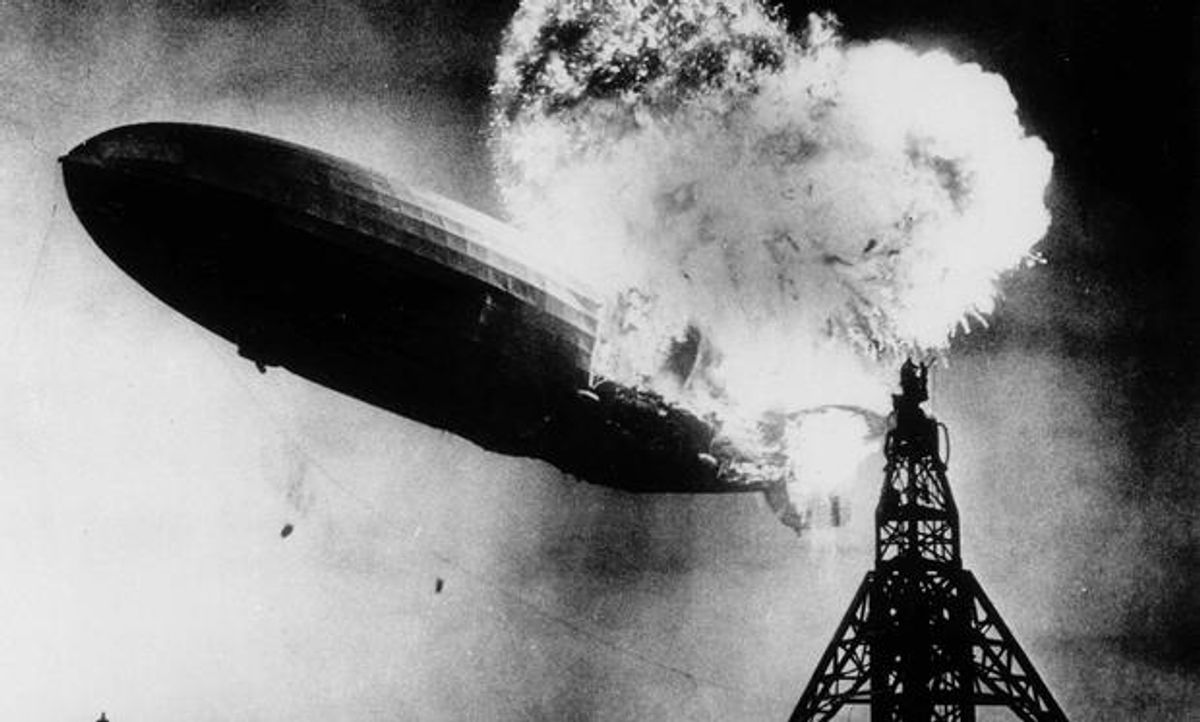Ever wonder why the space shuttle carried quaint computer systems from the days of visible transistors and perforated readout paper? The reason is reliability, which matters more than coolio capabilities when your life’s on the line.
That’s why the designers of the Boeing 787 must have thought twice before putting coolio lithium-ion batteries into an airliner meant to carry up to 290 passengers. Maybe they should have thought a third time. This week a scary battery fire in one of the airliners, in Japan, sparked a worldwide grounding of the entire fleet.
Nobody was hurt, but then again, the fires broke out when the airliner was on the ground
. (Correction: one of the fires did indeed break out in the air).
It seems that the batteries heated up in a self-accelerating pattern called thermal runaway. Heat from the production of electricity speeds up the production of electricity, and… you’re off. This sort of things happens in a variety of reactions, not just in batteries, let alone the Li-ion kind. But thermal runaway is particularly grave in Li-ion batteries because they pack a lot more power than the tried-and-true metal-hydride ones, not to speak of Ye Olde lead-acid.
It’s because of this very quality that Li-ion batteries found their first application in small mobile devices, where power is critical and fires won’t cost anyone his life. It’s also why it took so long for the new tech to find its way into electric and hybrid-electric cars.
Why put these batteries in cars? Because cars are under fierce regulatory pressure to meet ever-stricter fuel-economy and emissions standards, and that requires that they both reduce total weight and also emphasize electric propulsion. Li-ion technology does both. The first vehicle to show off Li-ion technology was the original Tesla Roadster, which surrounds the passenger cockpit with a huge pile of small battery cells, each one segregated so that thermal runaway can’t propagate and, as they say, ruin your whole day.
But then why risk such batteries in airliners? That’s a tougher question, because here a light battery pack isn’t strictly necessary. But mass still matters. Remember, light weight is the entire point of the Boeing 787, the first airliner built largely of superlight plastic. That advance, along with other refinements, reduces fuel consumption by a fifth.
Boeing was certainly aware of the dangers, and it engineered a number of backup systems to ensure the safety of its batteries, which it divided into two widely separated 60-kilogram packs. Apparently the redundant safety system failed, allowing a fire and the leakage of battery electrolytes. That’s bad because the electrolytes are flammable and can conduct electricity, which gives them two different ways to propagate the problem to other systems, including safety systems.
Perhaps it would have been wiser of Boeing to go for the safest possible Li-ion design, even if it didn't have quite as much oomph as possible. That's what today's main-line electric-drive cars do, as our colleague, John Voelcker, points out.
“The cells in the 787, from Japanese company GS Yuasa, use a cobalt oxide (CoO2) chemistry, just as mobile-phone and laptop batteries do,” he writes in greencarreports.com. “That chemistry has the highest energy content, but it is also the most susceptible to overheating that can produce "thermal events" (which is to say, fires). Only one electric car has been built in volume using CoO2 cells, and that's the Tesla Roadster. Only 2,500 of those cars will ever exist.” Most of today’s electric cars, Voelcker adds, use chemistries that trade some energy density for safety.
You might think that bad news for Boeing must be good news for archrival Airbus. However, Boeing's shares are down only a few percentage points. Maybe investors figure that the battery problem, too, shall pass, and that in the meantime, Boeing has a bigger backlog of orders than Airbus does.
Still, Airbus is preparing to market the A350, which resembles the Boeing 787 both in its high carbon-fiber composite content and in its use of Li-ion batteries, although those will be supplied by another vendor, France's Saft. On the other hand, as Aviation Week reports, the A350 doesn't make such heavy use of electricity, leaving braking, deicing and other functions under one or another form of mechanical control.
The publication says that Airbus executives told a press conference yesterday that the A350 was still in development and so its batteries could still be exchanged for a metal-hydride alternative. That, however, would add weight, take up more space, require more maintenance over time and perhaps delay marketing.
Philip E. Ross is a senior editor at IEEE Spectrum. His interests include transportation, energy storage, AI, and the economic aspects of technology. He has a master's degree in international affairs from Columbia University and another, in journalism, from the University of Michigan.



